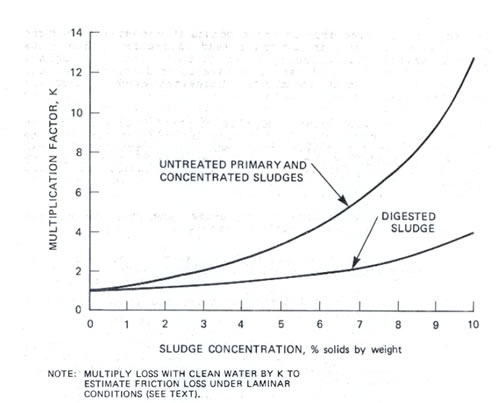Water and Wastewater
LobePro Rotary Lobe Pumps are perfectly suited for moving industrial and municipal sludge because they are:
- Durable, reliable and compact
- Quick, easy and inexpensive to repair
- Can pump thick, abrasive materials with a predictable, steady flow without ragging, delaminating, having seal leaks or requiring compensation “Reserve Seal Oil Pressure”.
Our rotary lobe pumps are typically used to pump sludge to and from thickeners, separators (such as belt presses, centrifuges, rotary presses), digesters, and clarifiers. They are the right choice for pumping any WWTP sludge which has had the hard solids over 1/8” and most grit removed for flows up to 2000 gpm and pressures up to 150 PSI. We can specify an in-line grinder, filter or knock-out tank should solids larger than 1/8″ be present. See our pump specs for further detail.
We are not the only ones who think rotary lobe pumps are the best for WWTP sludge. Most WWTP textbooks agree.
WWTP engineering and proper application of our pumps.
Positive displacement pump are generally recommended by most wastewater engineering text book for pumping wastewater sludge with solids greater than 2%. The two basic types of positive displacement pumps are rotary or reciprocating pumps. For most applications, rotary pumps are preferred to reciprocating pumps, such as piston pumps, because of pulsation and cost. The two most popular types of rotary positive displacement pumps are progressive cavity and rotary lobe pumps. These both are frequently designed to pump: Prescreened Primary Sludge, Secondary Sludge, Activated Sludge, Dissolved Air Flotation Sludge, Tertiary and Other Sludge.
We believe, between the two, rotary lobe pumps are a better choice for most wastewater sludge and we are not alone. We see the principle advantages of rotary lobe pumps as ability to run dry for a period if time, a small foot print, ability to do maintenance simply , quickly and at lesser cost. For more information see Advantage of Rotary Lobe Pumps vs. Progressive Cavity Pumps.
Below are some notes on the proper application of rotary lobe pumps. this is just a brief summary. When you are deciding what is best for you or your clients we hope you will call and discuss your application with our engineers.
Pump speed affects wear exponentially. The best measure of pump speed for wear is the lobe tip speed. If the percent of grit and sand and the size of hard solids are unknown we suggest that samples be taken an analyzed.
If hard solids larger than 1/8 inch (3 mm) are consistently in the pumpage, we suggest that you specify one of the following options: filter, grinder, or knock-out tank. Occasional hard solids larger than 1/8 inch are acceptable. Our rotary lobe pumps are designed to pass softer, compressible solids such as feminine hygiene products (tampons), rags, panty hose, and plastic bottles without damage.
Rotary lobe pumps are capable of self priming with swan-necked suction and discharge fittings. The suction lift height capability depends upon the speed of the pump and the viscosity and specific gravity of the material being lifted. If you have a suction lift application, it is best practice to contact the factory directly for consultation.
Suction lines should be kept short, straight and sized to maintain a velocity of 2.5 to 8 ft per second. This is especially important with sludge containing 3% or greater solids. Such sludge is non- Newtonian, will thicken when at repose and is compressible. These characteristics may result in the pump not receiving liquid on start up if the suction piping is not properly designed. Dry running may cause premature pump failure as a result of failure of the elastomers.
Design Flow Requirements such as TDH or PSI calculations should be made which factor in special problems of pumping sludge. Of particular concern is pipe friction losses encountered from pumping certain sludges can be many times greater than that of water. Please contact our engineering department for consultation if you would us to review your calculations.

*Curve Copied from EPA Standard 625/1-79-011, Chapter 14, and pg. 14-3
Non-Newtonian Fluids
Page 14-2 of the EPA standard states the above curve can be used as a rough guideline when:
- Pipe velocities are between 2.5 feet/sec and 8 ft/sec.
- Thixotropic behavior is not considered. Friction losses may be much higher in suction pipe. Also, when starting a pipeline shut down for over a day, unusually high pressure may be required. A sludge yield stress test can be obtained to accurately determine PSI and horsepower required to overcome initial resistance.
- The pipe is not seriously obstructed by grease or other materials.
Corrosion
The specification should note any chemicals not compatible with NBR or Iron as these are commonly quoted materials. The PH range of the pumpage should be disclosed in the spec also. Chemical incompatibility may result in premature failure of the pump.
General Note
Rotary lobe pumps can be run in forward or reverse direction equally well. This feature can be used to simplify piping for both the primary and secondary pump. Additionally, if a VFD is specified, this feature makes it possible to specify automatic stopping and reversing functions to clear jams caused by hard solids, if this is considered a risk in your pumping application.
Request a quote from our Engineers today!
Our team is standing by to review your application.

